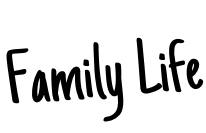|
|
|
|
This complete textbook chapter taken from the 1st edition of AS Sociology for AQA covers: 1. Defining the family group. 2. Perspectives on the family. 3. Family and social policy. 4. Family and household changes. 5. Marriage, divorce, cohabitation, separation and child- 6. Domestic labour, gender roles and power relationships. 7. Childhood. |
|
|
This complete textbook chapter taken from the 2nd edition of AS Sociology for AQA covers: 1. The relationship of the family to the social structure and social change, with particular reference to the economy and to state policies. 2. Changing patterns of marriage, cohabitation, separation, divorce, child- 3. The nature and extent of changes within the family, with reference to gender roles, domestic labour and power relationships. 4. The nature of childhood, and changes in the status of children in the family and society. 5. Demographic trends in the UK since 1900; reasons for changes in birth rates, death rates and family size. |
|
|
This complete chapter, taken from OCR Sociology for AS (2012), covers: definitions of family and household, different family structures and structural trends, trends in families and households, marriage, cohabitation and divorce trends |
|
|
The Relationship Between Family Groups and Social Structures: Defining the "Family Group"; basic types of family structure. Is the Family Group a Universal Social Institution? Sociobiology and Methodology. |
|
|
The universal nuclear family? The significance of family groups in society. Introduction to perspectives on family life (Functionalist, Marxist, Feminist). |
|
|
Introduction to Functionalist Theory; the Fit Thesis - |
|
|
|
The diversity of contemporary social life: Commonsense perceptions of family structure; Life- |
|
This complete chapter, taken from OCR Sociology for AS (2012), covers different types of diversity: Organisational, Class, Cultural diversity (age, gender, ethnicity) and Sexual. It also examines postmodernism and New Right approaches to family diversity and social policies related to family life. |
|
|
This complete chapter, taken from OCR Sociology for AS (2012), covers: the domestic division of labour, power relationships within the family, the relationship between children and parents, Functionalist, Marxist and Feminist explanations of family roles, demographic trends and changes. |
|
|
This complete chapter, taken from OCR Sociology for AS (2012), covers: Family functions and orientations, the link between individuals and society, family dysfunctions (the “Dark side of family life”), the ideological, economic and political roles of the family, Cultural, social and symbolic capital. |
|
|
Historical overview of family development (Willmott and Young, Bott, Shorter); Gender and power relationships (Domestic Labour). |
|
|
Theoretical explanations of gender roles: Biological, Sociobiological, Functionalist, Socio- |
|
|
The concept of power: definitions, the relationship between power and ideology; power relationships within the family; operationalising the concept of power; dimensions of power. |
|
|
The "Symmetry - |
|
|
Examination of New Right arguments about "family decline" and "breakdown". These notes consider marriage, cohabitation, illegitimacy, single- |
|
|
This teaching and learning study pack covers a range of critical approaches to understanding the family group - |
|
|
The distinction between sex and gender; The concepts of socialization, instinct, reflex and biological drives; The relationship between socialization and culture.. A shorter version of this file is also available. |
|
|
The process of gender socialisation; Mead's concept of role play; aspects of primary socialisation (Imitation, Identification, Role Learning, Conditioning); Culture, socialisation and the individual. |
|
|
Sociological and non- |
|
|
Theories of workplace inequality; "dual labour market" theory; "reserve army of labour" theory. |
|
|
Overviews of Liberal, Marxist, Radical and Socialist Feminism; the concepts of patriarchy and sex class. |
|
|
Defining childhood; Changing conceptions of childhood; Historical and Comparative dimensions. |
|
|
Defining old age; Changing conceptions of old age; Historical and Comparative dimensions. |
|
|
|
Defining "social policy"; the relationship between policy and ideology; the concept of a "family ideology"; the relationship between policy initiatives and their outcomes; the social democratic and market liberal perspectives on welfare; examples of social policies as they have affected family life directly and indirectly in Britain. |


